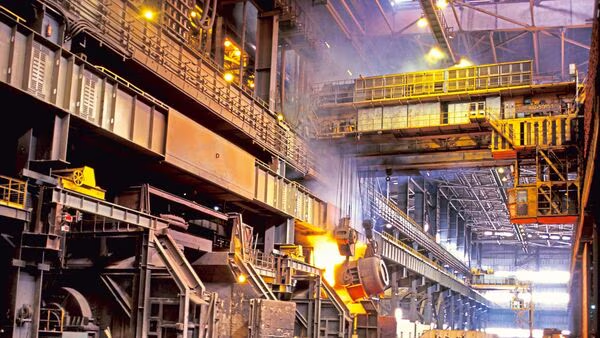India–US Trade Tensions Rise Over Steel and Auto Tariffs NMDC Limited reports a 38% drop in Q4 FY24 consolidated net profit RINL to Raise $23 Million Through Land Sales Amid Crisis

Bengal saw a 12% increase in steel production in FY2024, trailing slightly below the national average, as Indian steel output increased to 143 million tonnes (MT) in the previous fiscal year. Market intelligence platform BigMint estimated India's growth to be 13%, with the majority of the growth coming from the country's top-producing states, including Odisha, Jharkhand, Chhattisgarh, and Karnataka.
Bengal produced 11 MT of steel in FY24, compared to 9.83 MT in the previous fiscal year. Indian production was roughly 127 MT in FY23. Odisha, which is rich in iron ore and coal—two major raw resources for steel production via the blast furnace route—was the greatest producer among Indian states, producing 26 MT. The state also has several seaports, which provide producers with a logistical edge. Jharkhand, which has been the cradle of steel production in India, stood second with 20 MT production, followed by another mineral-rich state, Chhattisgarh, which produced 18 MT of steel.
The growth in steel production was led by the primary producers (the large integrated players such as Tata and JSW) and smaller secondary producers who usually took the sponge iron route to steel making. However, BigMint noted that electric induction furnaces (IFs), which use electricity for melting, spearheaded production in FY24, and the share of this segment rose to 35%.
Small-scale producers usually prefer the route where small to medium batches of metal are melted, requiring precise temperature control. These mills witnessed higher margins, resulting in higher capacity utilisation by these players.
In comparison, the electric arc furnace (EAF), which is suitable for large-scale metal recycling and for melting various grades of metal scraps, is also gaining currency among some of the large integrated producers. Both Tata Steel and JSW Steel have announced plans to set up EAFs using scrap as raw material in a bid to reduce their carbon footprint and promote a circular economy.
However, future capacities are predicted to mostly take the BOF route. Icra estimates that 15.6 MT additional steel capacity will be added in FY2025. Some of the notable additions will come from Tata, JSW, and ArcelorMittal.
Bengal, which lacks the iron ore resource, depends on neighbouring states. Sponge iron and IF are preferred routes for state-based secondary steel makers and are expected to operate and grow that way. SAIL is the only company with integrated steel-making operations in Durgapur (Durgapur Steel Plant) and Burnpur (IISCO). The next expansion phase will add close to 7MT additional capacity in Bengal.
Also Read : China Jan-Feb crude steel output surprises with 1.6 % surge on year Indian metal market shine after China manufacturing rebounds